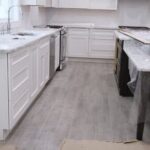Can you borrow more on your mortgage for home improvements? Homeowners often find themselves in need of additional funds to make necessary renovations or upgrades to their property. In this article, we will explore the concept of borrowing more on your mortgage for home improvements and why it is a common practice for homeowners. From understanding mortgage refinancing to considering alternatives to mortgage borrowing, we will provide valuable insights and considerations for homeowners looking to invest in their properties.
When it comes to making significant home improvements, many homeowners turn to the option of borrowing against their existing mortgage. This allows them to access additional funds without having to take out a separate loan. Whether it’s to add value to their property or enhance their living space, the idea of leveraging one’s mortgage for home improvements is an attractive option for many.
Throughout this article, we will delve into various methods of accessing additional funds for home improvements through your mortgage, such as cash-out refinancing and home equity lines of credit (HELOC). We will also discuss important factors to consider before deciding on this approach and provide guidance on qualifying for a larger mortgage. By the end, readers will have a better understanding of whether borrowing more on their mortgage is the right choice for their specific renovation needs.
Understanding Mortgage Refinancing
Mortgage refinancing is a process that allows homeowners to replace their existing mortgage with a new loan, often with better terms and lower interest rates. This can also provide an opportunity for homeowners to access additional funds that can be used for home improvements. By refinancing, homeowners can borrow more on their mortgage without having to take out a separate loan for renovations.
Benefits of Mortgage Refinancing for Home Improvements
One of the main benefits of mortgage refinancing for home improvements is the potential to secure a lower interest rate. This can result in significant long-term savings, especially if the homeowner plans to stay in the property for an extended period. Additionally, by borrowing more on their mortgage through refinancing, homeowners can potentially take advantage of tax-deductible interest payments on the additional funds used for home improvements.
Drawbacks of Mortgage Refinancing for Home Improvements
Despite its benefits, mortgage refinancing also has some drawbacks that homeowners should consider. Refinancing comes with closing costs and fees, which can add up to thousands of dollars. Additionally, extending the repayment term on the mortgage by refinancing may result in paying more interest over the life of the loan. Furthermore, homeowners who have already paid down a significant portion of their original mortgage may not want to reset the clock on their loan term by refinancing.
Home Equity Line of Credit (HELOC)
A Home Equity Line of Credit (HELOC) is a popular option for homeowners looking to borrow more on their mortgage for home improvements. This financial product allows homeowners to access a line of credit based on the equity in their home, which can then be used for renovations, repairs, or other home improvement projects.
One of the primary benefits of a HELOC is that it provides flexibility, allowing borrowers to use the funds as needed and only pay interest on the amount they use. Additionally, because the loan is secured by the home’s equity, HELOCs typically offer lower interest rates compared to other forms of borrowing.
However, there are also drawbacks to consider when using a HELOC for home improvements. One potential downside is that variable interest rates can make monthly payments unpredictable and lead to higher costs over time.
Furthermore, if homeowners are unable to repay the borrowed funds, they risk losing their home through foreclosure. It’s important for borrowers to carefully assess their financial situation and weigh the pros and cons before deciding if a HELOC is the right option for funding their home improvement projects.
| Pros | Cons |
|---|---|
| Flexibility in using funds | Unpredictable variable interest rates |
| Lower interest rates | Risk of losing home if unable to repay |
Cash-Out Refinance
A cash-out refinance is a financial strategy that allows homeowners to tap into the equity they’ve built in their home and borrow additional funds for renovations or other purposes. This process involves refinancing your existing mortgage for a larger amount than what you currently owe, and then receiving the difference in cash at closing.
For example, if your home is worth $300,000 and you owe $200,000 on your mortgage, you could potentially refinance for $250,000 and receive $50,000 in cash to use for home improvements.
How It Works
When you choose to do a cash-out refinance, you essentially take out a new mortgage that is larger than your current loan. The money you receive from this refinancing can be used for any purpose, but it is often used for major expenses like home renovations and improvements. This strategy can be attractive to homeowners because it allows them to access a large sum of money at once.
Considerations and Risks
While a cash-out refinance can provide access to much-needed funds for home improvements, it’s important to carefully consider the risks involved. By borrowing more against your home’s equity, you are essentially increasing your debt load. Additionally, there are costs associated with refinancing, such as closing costs and fees. Homeowners should weigh these expenses against the potential benefits of accessing additional funds for renovations.
Overall, when contemplating whether or not to pursue a cash-out refinance for home improvements, homeowners
Qualifying for a Larger Mortgage
When considering borrowing more on your mortgage for home improvements, it’s important to understand the process of qualifying for a larger mortgage. One of the key factors in determining how much you can borrow is your credit score. Lenders typically require a good credit score to qualify for a larger mortgage, as it indicates your ability to repay the loan.
In addition to your credit score, lenders will also look at your debt-to-income ratio (DTI) when deciding whether to approve you for a larger mortgage. Your DTI is calculated by dividing your monthly debt payments by your gross monthly income. Lenders prefer a lower DTI, as it shows that you have more disposable income available to cover the new mortgage payments.
Another important factor in qualifying for a larger mortgage is the appraised value of your home. The lender will assess the value of your property to determine how much equity you have, which can affect how much you can borrow for home improvements. It’s also worth noting that different lenders may have varying requirements and criteria for approving larger mortgages, so it’s advisable to shop around and compare offers.
It’s essential for homeowners considering borrowing more on their mortgage for renovations to ensure they are financially ready and able to take on additional debt. Careful financial planning and understanding the requirements for qualifying for a larger mortgage can help individuals make informed decisions about using this financing option.
| Factor | Consideration |
|---|---|
| Credit Score | A good credit score is usually needed to qualify for a larger mortgage. |
| Debt-to-Income Ratio (DTI) | Lenders prefer a lower DTI when considering approval for a larger mortgage. |
| Appraised Value of Home | The value of your property affects how much equity you have and therefore how much you can borrow. |
Cost-Benefit Analysis
When considering borrowing more on your mortgage for home improvements, it is crucial to conduct a thorough cost-benefit analysis to determine whether it is a financially sound decision. Here are some key factors to keep in mind when weighing the long-term costs and benefits:
- Interest Rates: One of the most important considerations when borrowing more on your mortgage for renovations is the impact it will have on your interest rates. If you choose to refinance or take out a HELOC, you’ll need to consider how this will affect your overall interest payments over time.
- Home Value: It’s essential to assess how the improvements you plan to make will impact the value of your home. Will the renovations increase the resale value enough to justify the additional debt? Make sure to research the potential return on investment for different types of renovations before moving forward with borrowing more on your mortgage.
In addition to these key points, homeowners should also carefully consider their long-term financial goals and how borrowing more on their mortgage for home improvements aligns with those objectives. It’s important to factor in potential changes in income, family size, and other life circumstances that can impact your ability to manage increased mortgage debt.
Ultimately, conducting a comprehensive cost-benefit analysis will help homeowners make an informed decision about whether borrowing more on their mortgage for renovations is a prudent choice. By carefully weighing the long-term costs and benefits, individuals can ensure that they are taking a financially responsible approach to improving their home.
Alternatives to Mortgage Borrowing
When considering borrowing more on your mortgage for home improvements, it’s important to explore all of your financing options. While using your mortgage may seem like the most convenient option, there are alternatives worth considering. Here are some financing options to consider:
- Personal Loans: If you only need a relatively small amount of money for your home improvements, a personal loan can be a good option. Personal loans typically have fixed interest rates and a set repayment schedule, making it easier to budget for the expense.
- Home Improvement Loans: These loans are specifically designed for funding home renovation projects. They often have lower interest rates compared to personal loans and can be obtained through banks or credit unions with favorable terms.
It’s important to carefully weigh the pros and cons of each financing option before making a decision. Consider factors such as interest rates, repayment terms, and how the loan will impact your overall financial situation.
Keep in mind that regardless of the financing option you choose, it’s crucial to assess your ability to repay the loan and avoid overextending yourself financially. Prioritize finding a solution that aligns with your long-term financial goals and provides you with the means to comfortably complete your home improvement projects.
Final Thoughts
In conclusion, borrowing more on your mortgage for home improvements can be a practical way to finance renovation projects and increase the value of your property. Whether it’s through mortgage refinancing, a Home Equity Line of Credit (HELOC), or a cash-out refinance, homeowners have several options to consider when it comes to accessing additional funds for renovations.
However, it’s important to weigh the benefits and drawbacks of each option and carefully consider the long-term costs before making a decision.
When considering borrowing more on your mortgage for home improvements, it’s essential to thoroughly assess your financial situation and evaluate whether you qualify for a larger mortgage. Additionally, utilizing alternative financing options such as personal loans or home improvement loans can also be worth exploring. It’s crucial for homeowners to compare different options and choose the one that best fits their financial needs and goals.
Ultimately, before deciding to borrow more on your mortgage for home improvements, homeowners should consult with a financial advisor or mortgage lender. Seeking professional guidance can provide valuable insights and help make an informed decision that aligns with their individual circumstances. By carefully evaluating all available options, homeowners can make the right choice when it comes to financing their home improvement projects.
Frequently Asked Questions
Can You Add a Home Improvement Loan to Your Mortgage?
Yes, it is possible to add a home improvement loan to your mortgage through a cash-out refinance or a home equity loan. Both options allow you to leverage your home’s equity to finance renovations.
Can You Borrow More Money on an Existing Mortgage?
Borrowing more money on an existing mortgage can be done through a cash-out refinance, which allows homeowners to refinance their mortgage for more than they owe and receive the difference in cash.
How Do You Increase the Amount You Can Borrow on a Mortgage?
Increasing the amount you can borrow on a mortgage can be achieved by improving your credit score, paying off existing debt, saving for a larger down payment, and seeking pre-approval from multiple lenders to find the best offer for your financial situation.

I’m thrilled to have you here as a part of the Remodeling Top community. This is where my journey as an architect and remodeling enthusiast intersects with your passion for transforming houses into dream homes.





